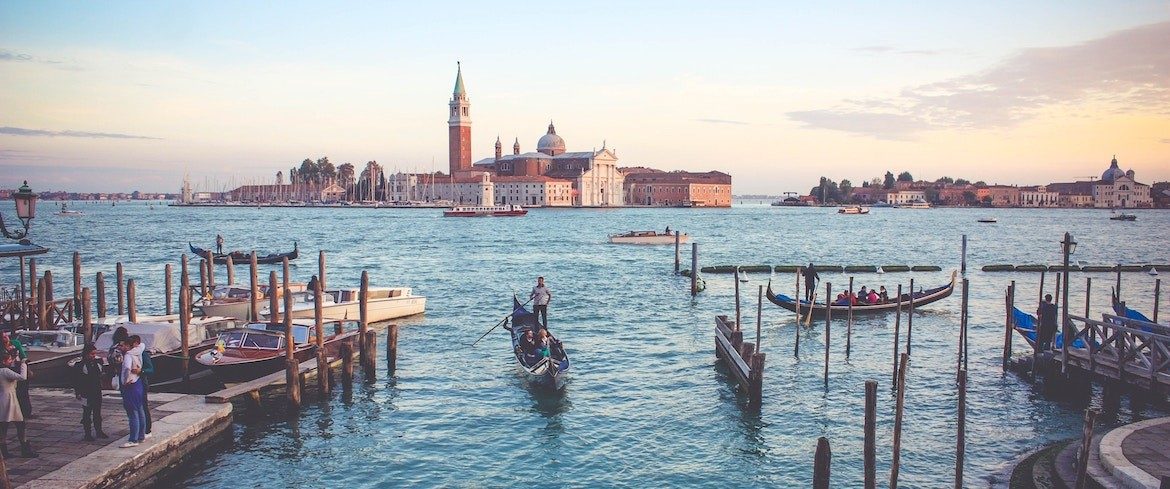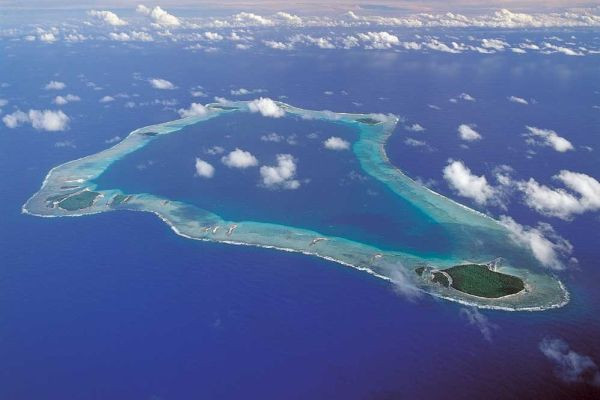As the world hurtles through the 21st century, the rapid pace of human activity has left an indelible mark on our planet. While technological advancements and industrial growth have brought unprecedented progress, they have also triggered a crisis that is often overlooked: the disappearance of natural landscapes. From melting glaciers to eroding coastlines, deforestation to desertification, these disappearing places are not just losses of physical space—they are the erosion of biodiversity, culture, and the very essence of life on Earth. This article delves into the causes, consequences, and potential solutions for this silent crisis, emphasizing the urgent need for global awareness and action.
The Causes of Disappearing Places
The disappearance of natural landscapes can be attributed to a combination of human activities and natural processes, both of which are increasingly driven by the effects of climate change.
Climate Change: Perhaps the most significant driver of disappearing places, climate change is causing profound shifts in weather patterns, sea levels, and temperatures. Glaciers and ice caps are melting at an alarming rate, leading to rising sea levels that threaten to submerge low-lying coastal areas and islands. The Arctic, for instance, has experienced a dramatic reduction in sea ice, which not only disrupts local ecosystems but also contributes to global climate instability.
Deforestation and Habitat Destruction: Human activities such as logging, agriculture, and urbanization have led to the widespread destruction of forests and other natural habitats. The Amazon rainforest, often referred to as the "lungs of the Earth," is one of the most significant examples of this crisis. Deforestation in the Amazon is driven by agriculture, mining, and infrastructure development, resulting in the loss of biodiversity and the displacement of indigenous communities.
Urbanization and Industrialization: As cities expand and industries grow, natural landscapes are increasingly converted into urban and industrial areas. Wetlands are drained, forests are cleared, and rivers are diverted to accommodate human needs. This transformation not only reduces the availability of natural habitats but also increases pollution, leading to further degradation of the environment.
Desertification: In many parts of the world, land degradation is leading to desertification—the process by which fertile land becomes desert. This is often driven by overgrazing, deforestation, and unsustainable agricultural practices. The Sahel region in Africa is one of the most affected areas, where the encroachment of the Sahara Desert is threatening the livelihoods of millions of people.
Rising Sea Levels and Coastal Erosion: Coastal regions around the world are facing the threat of rising sea levels, which result in the erosion of shorelines and the submersion of land. Island nations in the Pacific, such as Kiribati and the Maldives, are particularly vulnerable to this phenomenon. These communities are at risk of losing their homes, culture, and entire way of life as their lands gradually disappear under the encroaching ocean.
Consequences of Disappearing Places

The disappearance of natural landscapes has far-reaching consequences that extend beyond the immediate loss of land. These consequences impact biodiversity, human communities, and global environmental stability.
Loss of Biodiversity: Natural landscapes are home to a vast array of plant and animal species, many of which are unique to specific regions. The destruction of these habitats leads to the loss of biodiversity, as species are unable to adapt to the rapid changes in their environment. The extinction of species disrupts ecosystems and reduces the resilience of the planet to environmental changes.
Impact on Indigenous Communities: Many disappearing places are home to indigenous communities that have lived in harmony with their natural surroundings for generations. The loss of these landscapes often leads to the displacement of these communities, forcing them to abandon their traditional ways of life. This not only results in the loss of cultural heritage but also contributes to social and economic challenges as these communities struggle to adapt to new environments.
Climate Feedback Loops: The disappearance of natural landscapes can contribute to climate feedback loops that exacerbate global warming. For example, the melting of Arctic ice reduces the Earth's albedo, or the ability to reflect sunlight, leading to further warming. Similarly, deforestation reduces the capacity of forests to sequester carbon dioxide, contributing to higher levels of greenhouse gases in the atmosphere.
Economic and Social Disruption: The loss of natural landscapes can have significant economic and social impacts. Coastal communities, for example, rely on healthy ecosystems for tourism, fishing, and protection from storms. The erosion of coastlines and the submersion of land can lead to economic losses, displacement, and increased vulnerability to natural disasters.
Cultural Loss: Many natural landscapes hold cultural and spiritual significance for the communities that inhabit them. The disappearance of these places represents not just a physical loss but also a cultural and spiritual one. Sacred sites, traditional practices, and local knowledge are often tied to specific landscapes, and their loss can erode the cultural identity of communities.
Case Studies: Disappearing Places Around the World
The Amazon Rainforest: The Amazon is often referred to as the "lungs of the Earth" because of its vast biodiversity and its role in regulating the global climate. However, deforestation and land conversion for agriculture and mining are causing significant damage to this vital ecosystem. The loss of the Amazon has global implications, from reduced carbon sequestration to the loss of countless species.
The Arctic: The Arctic is warming at twice the rate of the rest of the planet, leading to the rapid melting of sea ice and glaciers. This not only threatens the unique ecosystems of the region but also has global implications for sea-level rise and climate patterns. The loss of Arctic ice also opens up the region to increased human activity, such as shipping and oil exploration, which can further degrade the environment.
The Great Barrier Reef: The Great Barrier Reef is one of the most biodiverse ecosystems on the planet, home to thousands of species of marine life. However, climate change, pollution, and overfishing are threatening the health of the reef. Coral bleaching, caused by rising ocean temperatures, has led to the death of large sections of the reef, with dire consequences for the species that depend on it.
Kiribati: The island nation of Kiribati in the Pacific Ocean is one of the most vulnerable to rising sea levels. As the ocean encroaches on the land, the people of Kiribati are facing the prospect of becoming climate refugees, forced to leave their homes and way of life behind. The loss of Kiribati would be not only a physical loss but also a cultural and emotional one, as the island's people are deeply connected to their land and traditions.
The Sahel Region: The Sahel, a semi-arid region in Africa that stretches from the Atlantic Ocean to the Red Sea, is experiencing increasing desertification. Overgrazing, deforestation, and climate change are turning once fertile land into desert, threatening the livelihoods of millions of people who rely on agriculture and livestock. The loss of arable land is leading to food insecurity, displacement, and conflict in the region.
Solutions and Strategies
Addressing the crisis of disappearing places requires a multifaceted approach that includes conservation, sustainable development, and global cooperation.
Conservation and Restoration: Protecting and restoring natural landscapes is critical to preserving biodiversity and mitigating climate change. Efforts such as reforestation, the establishment of protected areas, and the restoration of degraded ecosystems can help to reverse some of the damage caused by human activity. International initiatives like the Bonn Challenge, which aims to restore 350 million hectares of degraded land by 2030, are examples of the global effort needed to address this crisis.
Sustainable Development: Promoting sustainable development practices is essential to preventing further loss of natural landscapes. This includes adopting agricultural practices that minimize environmental impact, promoting renewable energy sources, and reducing the carbon footprint of industries. Sustainable urban planning can also help to protect natural areas while accommodating the needs of growing populations.
Indigenous Knowledge and Leadership: Indigenous communities often possess valuable knowledge about how to live sustainably within their environments. Supporting indigenous leadership in conservation efforts and recognizing their land rights can play a crucial role in preserving natural landscapes. Many successful conservation projects have been led by indigenous groups who have a deep understanding of their ecosystems.
Climate Change Mitigation: Addressing the root causes of climate change is essential to slowing the disappearance of natural landscapes. This includes reducing greenhouse gas emissions, transitioning to renewable energy, and promoting policies that support climate resilience. International agreements like the Paris Agreement are critical frameworks for global cooperation in the fight against climate change.
Global Cooperation and Awareness: The crisis of disappearing places is a global issue that requires international cooperation and public awareness. Governments, organizations, and individuals all have a role to play in protecting the planet's natural landscapes. Raising awareness about the importance of these places and the threats they face can help to mobilize action and drive change.
Conclusion
The disappearance of natural landscapes is a silent crisis that threatens not only the environment but also the cultural, social, and economic fabric of our world. As glaciers melt, forests fall, and coastlines erode, the consequences are felt far beyond the immediate loss of land. Biodiversity, human communities, and global climate stability are all at risk as these vital places vanish.
However, there is still hope. Through conservation, sustainable development, and global cooperation, it is possible to slow, and even reverse, the disappearance of these critical landscapes. The time to act is now, before these disappearing places become lost forever. Our future depends on the choices we make today—choices that will determine whether the planet we pass on to future generations is one of beauty, diversity, and life, or one of loss and degradation.



